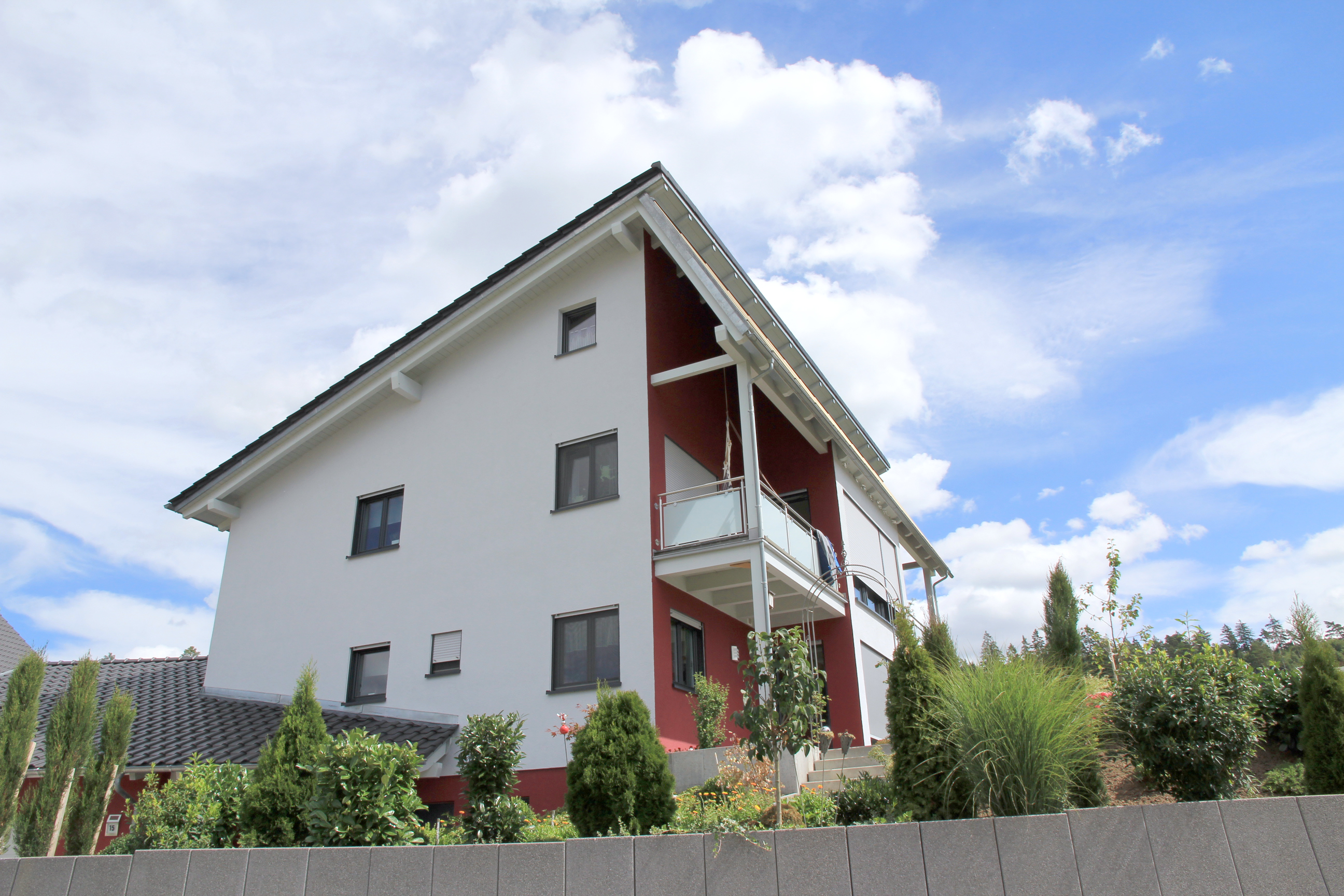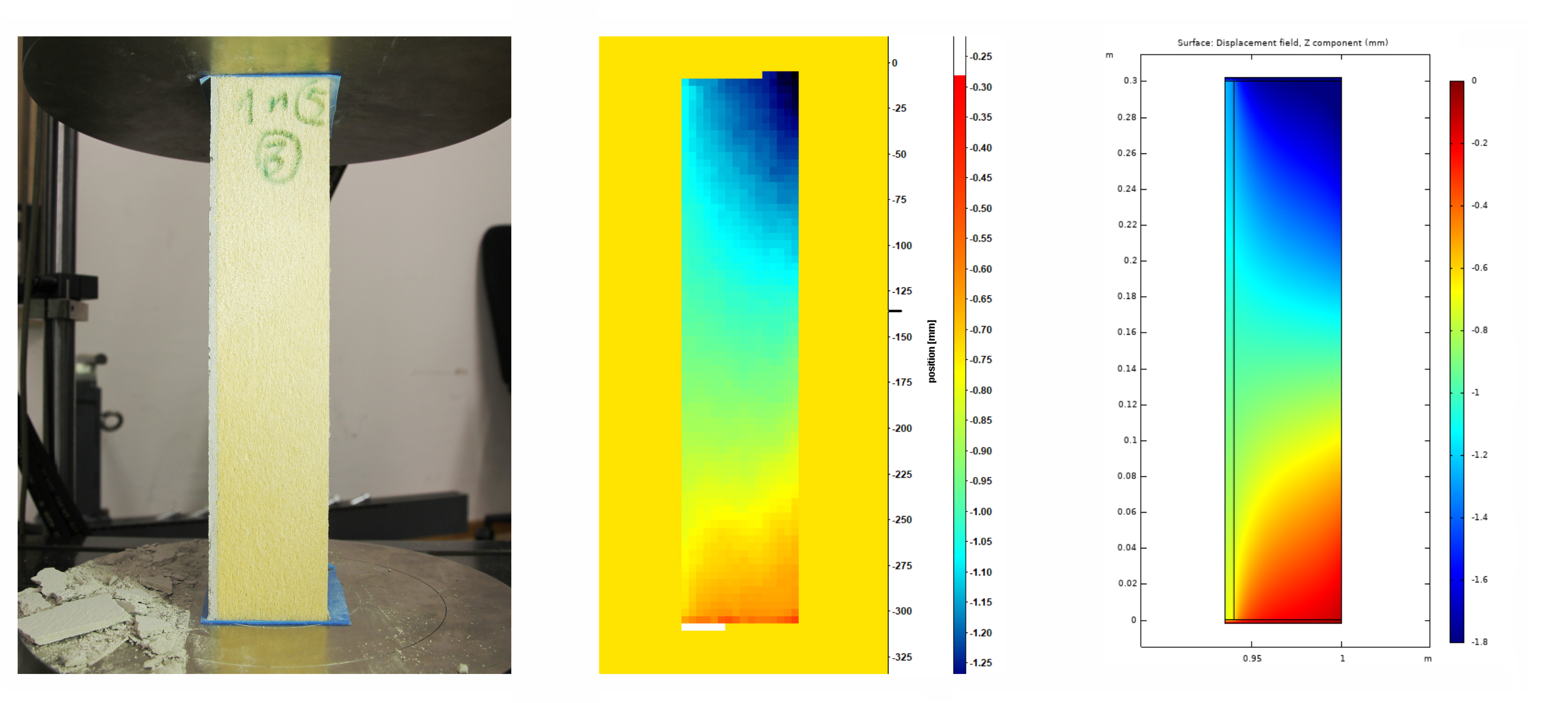External thermal insulation composite systems: Less testing and more knowledge enable innovation and sustainability in construction
Researchers at the Fraunhofer WKI and the Technische Universität Braunschweig have developed models for predicting the overall behavior of external thermal insulation composite systems (ETICS) in wooden construction. The results are being incorporated into a guideline. In the future, it will therefore be easier to integrate new components into ETICS which have already been approved. In addition, opportunities for material innovations are being created, in particular as regards renewable raw materials. ETICS which have already been approved can be optimized as a result of the new findings on suitability for use.


ETICS, which serve the thermal insulation of exterior walls on buildings, are already being widely used in construction. An ETICS consists of several components which are coordinated with one another. The testing and approval of the entire system is complex. Proof of use under building law is required for its application. If an ETICS has been approved, the components cannot simply be replaced, as this would result in the invalidation of the approval.
“ETICS are complex systems in which the interaction of the system components had not been sufficiently researched in the past. We have conducted a holistic analysis of the interaction of all system components in combination with eco-insulation materials and timber construction as a substructure. The fundamental data which we have collected enables the replacement of individual components of ETICS and simplifies the approval process. Furthermore, the components are made safer and more reliable as a result of our calculations,” explained Norbert Rüther, Project Manager at the Fraunhofer WKI.
Together with the project partner, the Institute of Building Construction and Timber Structures iBHolz at the TU Braunschweig, the researchers examined the individual system components: finishing plaster, base plaster, woven fabric, insulation panel, fasteners, and substructure. Systems with wood-fiber insulation materials on wooden substructures were investigated, such as wood-panel construction and solid-wood substructures. At the TU Braunschweig, the researchers conducted theoretical and numerical investigations on single- and multi-component systems and also constructed the models. At the Fraunhofer WKI, the scientists performed experiments on materials and two-component systems, as well as numerical investigations into heat and moisture transport.
“During our work, we operated on the assumption that the entire ETICS can be reduced to physical properties and processes. Although there are, for example, numerous plaster variants, we can nevertheless describe them with sufficient precision on the basis of physical properties such as modulus of elasticity and rigidity, yield strength and elongation at break, water absorption and conduction, thermal conductivity and heat-storage capacity, and thickness. This applies equally to both the insulation material and the wooden substructure,” explained Rüther.
The researchers thereby proceeded in three steps. First, the individual technical properties of each component were determined and then a selection of the relevant technical properties was undertaken. The researchers subsequently determined the influences of the components on the overall system and constructed a model for the prediction of the system behavior and the derivation of the system boundaries. The results will ultimately lead to the compilation of a guideline, which is currently still being developed.
With the results of the research project, innovations would also be possible for small companies which, for cost reasons, have not been able to have complex investigations carried out up until now. On the whole, the time and cost expenditure for companies would therefore be significantly reduced and new products could be launched on the market more quickly. For example, a newly developed plaster could be established without having to test the entire system. The results also provide better prediction possibilities for the serviceability of wooden structures. This paves the way for the increased material utilization of renewable raw materials and their safe and sustained use. The increased application of wood-based materials in construction leads to a longer-term storage of CO2 and provides an important contribution towards resource efficiency and the bioeconomy.
Funding
The IGF project 19906 N of the research association International Association for Technical Issues Related to Wood was funded by the German Federal Ministry for Economic Affairs and Energy via the German Federation of Industrial Research Associations (AiF) within the framework of the program for the promotion of joint industrial research (IGF) on the basis of a resolution of the German Bundestag.
The background of the Fraunhofer WKI
Sustainability through the utilization of renewable raw materials has formed the focus at the Fraunhofer WKI for 75 years. The institute, with locations in Braunschweig, Hanover and Wolfsburg, specializes in process engineering, natural-fiber composites, binders and coatings, wood and emission protection, quality assurance of wood products, material and product testing, recycling procedures and the utilization of organic building materials and wood in construction. Virtually all the procedures and materials resulting from the research activities are applied industrially.
Last modified:
 Fraunhofer Institute for Wood Research
Fraunhofer Institute for Wood Research